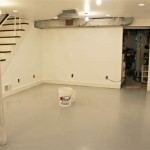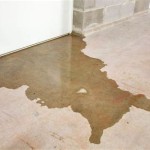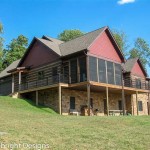How Do I Make My Concrete Basement Floor Look Nice?
Concrete basement floors are often perceived as cold, damp, and uninviting. However, with the right approach and materials, they can be transformed into attractive and functional spaces. This article explores several options for improving the aesthetic and practicality of concrete basement floors.
Painting
Painting is a cost-effective way to dramatically improve the appearance of a concrete basement floor. Epoxy-based paints are particularly well-suited for this purpose due to their durability and resistance to moisture. Before painting, the floor should be thoroughly cleaned and any cracks or imperfections repaired. A primer designed for concrete should be applied before the final coat of paint. A variety of colors and finishes are available, allowing for customization to match any décor.
Staining
Concrete stains penetrate the surface of the concrete, reacting chemically to produce rich, translucent colors. Acid-based stains create a mottled, variegated effect, while water-based stains offer a more uniform appearance. Staining is a good option for basements that experience occasional moisture, as the stain is absorbed into the concrete rather than sitting on top. Like paint, stains require a clean and prepared surface for optimal results.
Polishing
Concrete polishing involves grinding down the surface of the concrete with progressively finer diamond abrasives to achieve a smooth, glossy finish. This process can create a stunning, high-end look and is extremely durable and low-maintenance. Polished concrete can be left natural or stained to achieve a desired color. It is also resistant to moisture, staining, and abrasion, making it a practical choice for basements.
Epoxy Coatings
Epoxy coatings provide a seamless, durable, and attractive finish for concrete basement floors. They are highly resistant to moisture, chemicals, and abrasion, making them ideal for high-traffic areas or workshops. Epoxy coatings can be applied in a variety of colors and patterns, including metallic finishes and decorative flakes. They also offer excellent slip resistance, enhancing safety in the basement.
Rubber Flooring
Rubber flooring is a versatile option that offers comfort, durability, and sound insulation. Available in tiles or rolls, rubber flooring is easy to install and maintain. It is also resistant to moisture, mold, and mildew, making it suitable for basement environments. Rubber flooring comes in a wide range of colors and textures, from smooth and sleek to textured and patterned. It provides a cushioning effect underfoot, making it a comfortable choice for basement playrooms or home gyms.
Carpet Tiles
Carpet tiles offer a warm and inviting feel to a basement floor. They are easy to install and replace, making them a convenient option for homeowners. Carpet tiles come in a variety of colors, patterns, and textures, allowing for customization to match any style. Look for carpet tiles specifically designed for basement applications, as they are typically made with moisture-resistant backing. Proper subfloor preparation is essential for successful carpet tile installation.
Interlocking Tile Systems
Interlocking tile systems, often made of plastic or rubber, are a quick and easy way to upgrade a basement floor. These tiles are designed to fit together seamlessly, creating a durable and attractive surface. They are available in a variety of colors and patterns, and some offer drainage capabilities, making them ideal for damp basements. Interlocking tiles are also easy to clean and maintain, making them a practical choice for busy homeowners.
Area Rugs
Area rugs can add warmth, color, and texture to a concrete basement floor without the commitment of a permanent flooring solution. They can define different areas within the basement, such as a seating area or a play area. Choosing rugs with a low pile and moisture-resistant backing is recommended for basements. Regular cleaning and airing out of area rugs will help prevent mold and mildew growth.
Sealers
Regardless of the chosen flooring option, sealing the concrete basement floor is a crucial step. Sealers protect the concrete from moisture penetration, staining, and dust. They also enhance the appearance of the floor and make it easier to clean. Various types of sealers are available, including acrylic, epoxy, and polyurethane. Choosing the right sealer depends on the specific needs of the basement and the chosen flooring material.

15 Diy Basement Flooring Ideas Affordable Options For Basements

Polished Concrete Flooring Options For Your Basement Duraamen

Diy Basement Floor Stain And Finish 2 Colors Without Etching Youtube

Diy Concrete Floor Cheap Home Diys Design Mom

How To Paint A Concrete Floor Southern Hospitality

10 Ideas For Basement Flooring

How To Make Concrete Look Like Marble Floors Network

Stained Concrete Basement Floor Ideas

My Mudroom Floors 80 Makeover How To Paint Your Ugly Concrete Postbox Designs

6 Concrete Floor Covering Options Ideas Network








